Helen H. Moore's Blog, page 703
July 30, 2016
Enough with the spoiler alerts! Plot spoilers often increase enjoyment
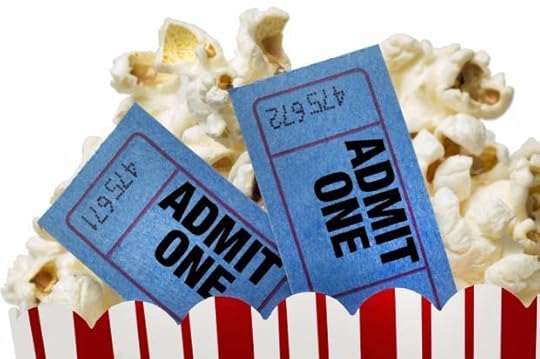
This article was originally published on The Conversation.
Last December, I had tickets to see “Star Wars: The Force Awakens” the night after the premiere. While I was at work that day, I was filled with anxiety. What if I overheard someone talking about the movie? What if I accidentally saw something online that gave away a major plot point?
Many can relate to the experience of avoiding spoilers: staying off social media, slipping away from coworkers who are discussing a recent plot development, quickly closing articles with revealing headlines.
The fear is that the experience of seeing it for the first time will be ruined — or, at least, the experience won’t be as good as it could be. It’s why spoiler alerts are everywhere these days (like in these articles about the new “Ghostbusters” movie), and why sharing unwanted spoilers is considered cruel.
But sometimes, there’s little logic to our beliefs about our behavior. For example, if not knowing what’s going to happen is so crucial for enjoyment, why do we watch movies we like more than once?
Over the past few years, several studies have tested the effects of spoilers on people’s enjoyment of stories. Their findings might change the way you react the next time a plot is inadvertently leaked to you.
A study with a surprising twist
In one study, psychologists Jonathan Leavitt and Nicholas Christenfeld had 819 undergraduate students read short stories written by well-known authors like Roald Dahl and Anton Chekhov.
Before reading each story, some students first read a paragraph that appeared to inadvertently spoil the outcome of the story. Others read the same story without spoilers. After reading the stories, the students rated how much they enjoyed them.
The researchers found that, on average, students found the spoiled stories slightly more enjoyable than the unspoiled stories. After breaking down the results by story type, the results stayed the same even for mysteries and plots with surprising twists — stories where you might expect that much of the enjoyment comes from not knowing how the story ends.
The satisfaction of knowing what to expect
It may come as a surprise that being exposed to a spoiler could cause someone to enjoy a film even more.
One possible explanation has to do with the psychological concept of “fluency.” The more fluent something is — whether it’s a story, a song or a face — the easier it is to process and understand. And many psychology studies have shown that the easier something is to process, the more likely people are to like it.
One way that fluency can make a story more enjoyable is that it reduces the need to make (possibly incorrect) inferences about where the story is going or what a character is thinking or feeling. You’ve probably experienced this when listening to music. The first time you hear a song, you might not think it’s anything special. But after the song becomes more familiar and you can anticipate how it will unfold, you realize that you really like it. Because the song has become more fluent, you’ve found yourself enjoying it more.
In a follow-up study, Leavitt and Christenfeld tested this fluency explanation by repeating their experiment on a different group of 240 undergraduate students. This time, the researchers used stories written for junior or high school students that use common tropes and plot devices. They reasoned that, for these simple and fairly predictable stories, fluency should already be high, and spoilers would have no effect on enjoyment if fluency was truly at work.
As predicted, they found that students rated these stories equally enjoyable with or without spoilers.
For some, spoilers really do spoil
The results suggest that obsessive avoidance of anything with the potential to reveal a plot twist is probably unwarranted. You’ll probably enjoy the movie, book or TV show either way.
But what if you’re convinced you’ve been exposed to a spoiler before and it really did ruin your reading or viewing experience?
It’s important to remember that Leavitt and Christenfeld’s results are average results. They don’t mean that everyone will enjoy a story more after it’s been spoiled. Indeed, a recent study by Judith Rosenbaum and Benjamin Johnson supports the idea that how you respond to spoilers might depend on your personality.
The researchers focused on two personality traits: “need for cognition” and “need for affect.” People high in need for cognition like to think and tend to seek out cognitively demanding activities like crossword puzzles. Analogously, people high in need for affect like to feel and tend to seek out emotional activities like watching heartwarming videos on YouTube. Although these two personality traits seem like opposites, they are independent — it’s possible for someone to be high in one, both or neither. In a study of 368 undergraduate students, the researchers found that students high in need for affect did, on average, tend to enjoy unspoiled stories more than spoiled stories. This could be because people that enjoy emotional experiences benefit more from the uncertainty and anticipation of not knowing what will happen.
As part of their study, the researchers also presented the students with brief descriptions of several stories and asked the students how much they would like to read each one. Some of these descriptions contained spoilers and some didn’t. Interestingly, the researchers found that students low in need for cognition were, on average, more likely to want to read the spoiled stories. This could be because the students expected spoiled stories to be easier to process. However, these students later enjoyed reading spoiled and unspoiled stories about equally. In other words, these students’ intuitions about spoilers (in this case, that they would enjoy spoiled stories more) were wrong.
This is similar to my experience. When I saw “The Force Awakens” for the second time, the movie had at that point been “spoiled” for me — by me. To my surprise, I enjoyed it more. Research on spoilers suggests that my experience wasn’t unusual. And it’s a good reminder that we shouldn’t always trust our intuitions about our own behavior.
 Alan Jern is an assistant professor of Psychology at the Rose-Hulman Institute of Technology.
Alan Jern is an assistant professor of Psychology at the Rose-Hulman Institute of Technology.
July 29, 2016
The Bourne Masculinity: Matt Damon’s hyper-aggressive, emotionally fragile “good guy with a gun”
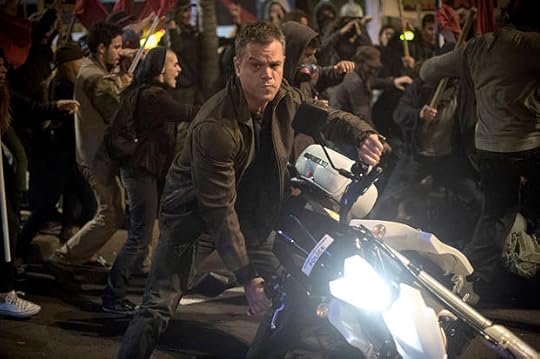
Matt Damon in "Jason Bourne" (Credit: Universal Pictures)
“Look at us,” Jason Bourne says to the man meant to kill him. “Look at what they make you give.”
It’s 2007 and the “they” in question is the Central Intelligence Agency — and, more covertly, a U.S. government so committed to counter-terrorist measures that it recruits and transforms its own citizens into veritable killing machines. As the invincible hero of “The Bourne Ultimatum,” the third installment of the 2002–2007 trilogy, Matt Damon slays, saves and anguishes. When he isn’t kicking ass as an amnesiac spy on the run, he’s dolefully ruminating on the aftermath of the said ass-kicking in his past. “I can see their faces — anyone I ever killed,” he confides to rogue hacker Nicki Parsons (Julia Stiles), who takes his battered hand in her own. Evidently, it isn’t easy ending the lives of others, even those who pose an ostensive threat to national security, survive a five-car collision or mildly resemble Drake.
Nearly a decade later, the flip phones and cybercafés of “Ultimatum” feel almost quaint, as does the notion that a good guy with a gun should carry one in the first place.
“You Know His Name” warn many a black-and-white poster papering city streets and subway tunnels — part of a promotional series for “Jason Bourne,” the latest chapter from director Paul Greengrass debuting today. In one version of the ad, a harsh key light cuts diagonally across Damon’s brow and cheekbone, one of the few spots in which the details of his body are scrutable. The other place, of course, is his cocked SIG pistol, pointed to the left as though aimed at passersby. It’s a riveting image — perhaps due most to the patent lack of wrath in Damon’s expression. His look is grave, unruffled, par for the course. It is the look of violence that has become mundane, officious versus malicious.
It is also a look that comes too close for comfort to current troubles that no marketing agency could have foretold. From the rising homicide rates in Chicago, St. Louis, and Atlanta; to the massacre in Orlando; to the killing of Alton Sterling and Philando Castile; to the slaughter of no less than eight police officers in Dallas and Baton Rouge, this summer is one of the bloodiest in recent U.S. history — rendering Moby’s “Extreme Ways,” the song that has concluded every Bourne film since 2002, chillingly prescient.
So it is no surprise that those who don’t know his name, who haven’t followed the movies, and who don’t give a hoot about Matt Damon’s offhand endorsement of Australia’s ban on assault rifles, see the newest film and its promotional campaign as yet another pro-violent, hyper-masculine affair. The most outspoken (or well-publicized) among the naysayers is Lena Dunham, who recently joined in protest against the guntastic images. When Tami Sagher, co-executive producer of “Girls,” suggested on Twitter that they “get rid of the guns in the Jason Bourne subway ads,” Dunham gamely echoed, “Good idea … Let’s go!” posting an image of a poster with its pistol peeled off. With more somber reservations, a friend of mine from Baton Rouge shared that whenever she sees the ads in Brooklyn, she imagines a black person beyond its borders, “waiting to be shot.”
So much for the Bourne “Legacy.”
What this disjunction reveals is a serious rift between the onscreen Bourne and growing anxieties over masculinity that convulse beyond the aspect ratio. Does it matter that, after fleeing the agency, Bourne’s character renounces violence in cases that are not self-defense? That he was indoctrinated at a young age by remorseless CIA officials? That he feels he had, and has, “no choice”? What is choice in an age in which practically the same explanation can justify the shooting of an unarmed black man? As my father told me when I was drafting this piece, “Bourne doesn’t kill when he doesn’t have to.” My dad (of course) has a point, but then, who decides what kind of violence is justified, or when it is (ever) mandatory?
The grand irony of Bourne 2016 is that a protagonist meant to represent the psychological ravages of violence has become a public emblem of uncontested (and unapologetic) white masculine power. I happen to think it does matter that in “Ultimatum,” our conflicted protagonist kills not one character through the use of a firearm — and that in the three crucial opportunities he has to shoot, he declines after terse deliberation. It also matters that in “Jason Bourne,” the majority of carnage comes in the form of efficient jiu jitsu and driving skills rather than from the barrel of a gun. Part of the pleasure in watching Bourne is witnessing a single agent out-fight and outwit U.S. “intelligence,” no number of PTSD flashbacks successful in stifling his abilities. Indeed, for as much as Bourne visibly suffers trauma, such trauma surfaces at the opportune time — seconds after he’s swatted off a pack of assailants, knocked out a Berlin anarchist or intrepidly steered himself out of harm’s way (body count of motorists advisedly unknown).
It might just be the savviness of the Bourne brand of violence that renders it less off-putting — specifically to fans, such as myself, wary of macho grandstanding yet willing to accept that a ripped Damon clocking brutes isn’t all that bad. And we, of course, are not alone. “Obviously, there’s an incredible amount of violence going on in the world and in the United States right now that’s devastating,” Julia Stiles admitted in an interview, “but this movie’s perspective is not one that glorifies or makes heroic the idea of being violent. In fact, it’s the opposite.”
But is it? For as much as he seeks a peaceful existence, that existence requires constant battle. As Mary T. Hartson argues in her essay “The Bourne Refusal? Changing the Rules of the Game,” “[D]espite Bourne’s apparent paradigm shift toward a kinder, gentler form of masculinity, his behavior on screen remains essentially that of a violent warrior … Not allowed to simply become a feeling, non-violent masculine being … this action hero must continue to use his body in ways he was trained.” In a lot of ways this lack of interior equivocation is what makes “Jason Bourne” the Bournest of them all — he doesn’t think, talk, reflect. He does. And this doing recalls a bygone masculinity to which arguably few men today have recourse.
“This character always feels like he’s running through the world we’re living in,” Damon put it in a recent interview, “that it’s torn from the headlines, and that’s the fun of it.” But when torn from his diegesis in a season where the headlines themselves are as violently spectacular as the 170-car pileup at the new movie’s climax, Bourne starts to feel as much omen as entertainment.
That is, for however out of touch with the films any Twitter-fueled pull-and-peeling may seem, the protest exposes a real collective concern for the effects of toxic masculinity on our cultural psyche. In light of the sheer volume of firearms that show up in the films, Damon’s recent support for a ban of assault weapons has been lambasted by both the right and the left as simple hypocrisy, but seems to me something much more complicated, representative of a broader trend in depictions of manhood across visual media: a “manic masculinity” polarized into hyper-aggression on one end and paralyzing self-doubt on the other. The Damon-Bourne franchise presents a figure at once incredibly competent and emotionally crippled, a mascot for a time in which a masculine identity has no reliable parameters — one in which we fetishize the jacked male body more than ever, all while rates of middle-aged men committing suicide have skyrocketed.
In his 2014 “Who’s the Man? Hollywood Defined Masculinity for Millions,” NPR’s Bob Mondello charts the transition from unquestionably heroic modes of masculinity to more “varied … human and unambiguously authentic” fare — from Apatow bro-pals and Doubtfire dads to, yes, the tormented Jason Bourne. While gesturing to the historical contexts that catalyzed this shift, Mondello ultimately claims that the turn from John Wayne to Iron Man isn’t “such a stretch.” After all, he argues, “They’re icons both, standing tall, fighting for the greater good.”
But how tall are they standing these days? What Mondello’s piece doesn’t consider is the extent to which that “greater good” is more uncertain on both an individual and national scale — an issue that the Bourne films, the newest one especially, negotiate across a subterranean maze of puddles and grime. Amidst rising tensions between left and right, security and privacy, liberty and state control, “Bourne” hosts a banquet of binaries that leaves one just as hungry as when she arrived. Whip pan after whip pan of relentless hunting, and we’re really no closer to the truth of it all.
Which feels, if anything, apropos. American trust in its government has dropped to record lows, with both Trump and Clinton woefully unpopular among a huge swathe of citizens. Despite plummeting unemployment rates in every state and a dramatic expansion of affordable healthcare, as of late 2015, 68 percent of Americans said the country was on the wrong track, the highest such figure in more than two years. To use Mondello’s phrase, when it comes to “who’s the man” — in terms of power, integrity and overall resolve — the fact is that many men (and women) aren’t so sure any more. Redemptive masculine qualities that have historically defined leadership can seem the stuff of yore; sociologist Michael Kimmel has demonstrated that definitions of being a “good man” differ starkly from being a “real” one. Where virtue and legitimacy fail to meet, one has to question the road itself.
In 2003, a year after the release of “The Bourne Identity,” Damon told the Sunday Herald, “I actually hate guns. They freak me out.” At the time, the actor looked more like the dimpled quarterback Charlie Dillon of 1992’s “School Ties” than the chiseled warrior knuckling through this year’s “Jason Bourne.” Like Hugh Jackman before him, Damon’s body mid-forties is preternaturally ripped — a less-rabid “Wolverine,” Tyler Durden with a conscience. The new Bourne launches with a jarring nihilism fitting for the realm of Palahniuk. “It doesn’t matter,” our hero tells Parsons, who, after years of separate hiding, has found him prizefighting on the outskirts of Greece. “All that matters is survival.”
Urging him to join her in exposing yet another state conspiracy, Parsons pleads, “But it does matter.”
And, so, to the fabled birthplace of democracy, they pack up their guns and go.
Danny McBride puts the Homer in homeroom: “‘The Odyssey’ finds its way into everything we do”
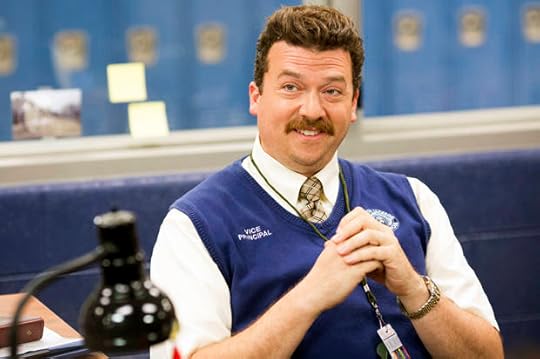
Danny McBride in "Vice Princpals" (Credit: HBO)
In HBO’s new dark comedy “Vice Principals,” Danny McBride finds himself once again in the unenviable position of being perpetually unenviable. McBride’s uptight, insecure Neil Gamby is the star of the show, which was co-created and co-written with his longtime collaborator, Jody Hill. Born in Georgia and raised in Virginia, McBride’s take on Southern culture is less the bucktoothed yokel in a burlap sack and more the cross-regionally relatable angry man on a mission. In similar fashion to his role as everyone’s favorite horse’s ass-slash-former major league pitcher Kenny Powers in “Eastbound & Down,” Gamby is tired of everyone’s shit. However familiar they may be to each other, though, each of his characters is like a McBride case study on the far-reaching and hilarious impact of social and cultural ineptitude.
Roles in comedies like “Tropic Thunder,” “This is the End” and “Pineapple Express” have seen the 39-year-old take the lead in virtually every scene, due in no small part to the fact that his be-mulleted and forever embittered disposition is so damn believable. To that end, McBride’s instincts have offered a much-needed respite from the manufactured comedic tropes of zany person meets square meets unexpected situation. On “Vice Principals,” McBride just goes with what he knows, which has been, and continues to be, reliably batshit hysterical. Salon recently spoke with him about the show and how his own Southern identity comes into play in portraying his characters.
Does being a Southerner yourself bring a sort of obligation to be especially sure that all of those complexities are there?
[Laughs.] Well, usually, when you see Southern characters in stories, they’re written as this stereotype of someone who’s ignorant or someone who’s a moron who’s there purely for comic relief. I think with Jody and I, since we grew up in the South, to us, we didn’t really ever see guys that fit that stereotype all the time. We always found humor in other things in the South, like the idea of a Tae Kwon Do studio in a strip mall. Those are the kinds of things that made us laugh. People walking around like idiots wasn’t really what we were seeing where we grew up. There’s all different types of people in the South and not just the stereotypical Billy Bob or whatever. I think, with all of these characters, it’s easy to write them off like oh, they’re assholes, or whatever, but we look at them like these weird, complicated Southern men that hold on to these weird values and old ideas of masculinity and how those things are so outdated when you look at them next to the rest of the world.
Right. The comedy’s less about setting and more about the situation and individual, which isn’t always the case with this type of character.
With us, we never really write our stuff for punchlines or anything. All of our stuff comes from the idea of the more real the world feels, the funnier the comedy usually lands, because with a lot of these characters, they’re in very recognizable situations, but they’re behaving in a way which none of us would behave. I think in order to get that, you have to really make the world feel normal and feel right, and that’s something that we strive for in the formula for comedy. I think in doing so, we also end up making a picture that’s more relatable for people and especially people from the South. It’s just a way of seeing your neighborhood or your street or your shopping center not portrayed as some gigantic joke or clichéd statement about everyone shopping at Walmart. [Laughs.]
Do you see your own childhood experiences finding their way into the writing?
For sure. I mean, I was the weird kid in school. When we read folk tales or something like that, I’d get really into it. I can remember when we read “The Odyssey” in high school. Everyone else was just sleeping through it. We’d read it every day, and I was the only one walking in saying, “Fuck, I can’t wait ‘til we get back there today. Ulysses is about to smoke everybody.” [Laughs.] It’s funny, too, because “The Odyssey” finds its way into everything we do. It’s all over “Eastbound & Down” with Mackworthy as The Cyclops. There’s all sorts of strange little things we put in there from the weird knowledge we have, ranging from pop culture to Homer.
How much of yourself do you see in a character like Kenny Powers or Neal Gamby?
That’s the thing. [Laughs.] People think that I’m really like these guys, but I couldn’t be any more different. I’m a kid who in high school was into drama and went to art school for college, so I feel like these guys were the ones I saw growing up. Even though I wasn’t like them, I sort of understood where they were coming from, easier than maybe somebody from Los Angeles or New York would if they saw that same person. And I think a lot of it comes from just being from the South and understanding the things about it that people from the big cities trip out on, but also understanding those things about the South that people from the big cities don’t even stand to realize goes on. [laughs] I think, in the writing, it’s always been about playing with that weird dynamic of giving people what they kind of assume already about the culture. I mean, with Kenny Powers, we were talking about it the other day, and I told Jody, “If I’d seen the poster for [“Eastbound & Down”] and not known anything about it, I don’t think I would’ve watched. A sports show featuring a guy with a mullet?” [Laughs.] But you know, I think that’s what we really liked about it. You take these things that on the surface might appear broad, and then you try to find some kind of weird depth to it.
These characters are pissed off and bitter, too, but they’re also weirdly magnetic.
It’s funny, and I didn’t really realize this until we started looking at everything, but what they all have in common is that they’re dreamers. They all have these grand visions of how life is gonna turn out, and for each of them it doesn’t really end up the way they thought it would. It’s that hopeless sort of anger that arises from when there’s really not anyone to take that out on, so the times that there is, it’s usually yourself. That creates this dilemma — how do you right it, if you’re the one who got you there? As a kid growing up in Spotsylvania, Virginia, talking about how I wanted to make movies when I got older, it was basically a lifetime of people going, “Yeah, sure.” [Laughs.] Because of that, I think we’ve carried that cross before, of being somebody with a big vision [and] nobody else is onboard. I see that in a lot of these characters, for sure.
That sounds more along the lines of drama. Is that idea of going to the left of comedy something that drives your writing?
The thing that’s weird about it is that when people ask us stuff like what comedies we were into growing up, honestly, our biggest influences aren’t even comedies. It was growing up on [Martin] Scorcese and [Francis Ford] Coppola and all of these amazing filmmakers from the ’70s. That’s what was really the touchstone for us, more than any sort of comedy, really. We don’t even approach them as if they were comedies, honestly. We approach them as if they were dramas that just have really fucked up funny parts in them. [Laughs.]
I mean, if you watch “Goodfellas,” Henry Hill is a murderer, but you still like him and root for him, and I think those are the kinds of rules we apply to this. I think that’s what really bored me about comedies back in the day is that a lot of them were, like, here’s this guy who’s unlucky in love or he’s just gotten over a breakup or something. It’s just all of these clichéd things, and the guy’s got a heart of gold from the beginning, and you can just see where it’s all going. I think, if you start off with a character that isn’t as easily recognizable, you cause a little bit more confusion, where the viewer’s thinking, “What’s supposed to happen? What do I even want to happen to this guy?” I think that’s what makes this more interesting to write [for].
A lot of it also just plays off of the fact that we’re in a culture now where we’ve grown up on movies. Every year, hundreds of new movies are coming out, and everyone has seen these stories a million times, and I really feel like to keep people on their toes. It’s half playing with what people expect just from seeing movies and being familiar with these stories, and then it’s half surprising people and turning those concepts on their head when they come up. I mean, for me, when I see a movie where the guy gets broken up with at the very beginning, I feel like I already know exactly where the movie is going. But if I see a story that starts with this vice principal losing his job and then burning someone’s house down, I’m gonna be like: What the fuck? Where’s this going? We write the stuff that we would want to see, and I feel like what I get bored with the most, when I go to the movies, is just predictability. That’s what we’re ultimately trying to do. It’s just about trying to find a way to get people to engage in a story that they don’t see coming.
Speaking of unpredictability, how much of the show is improvised?
We improv a little on this show, but on “Eastbound” we did a ton. It was one of our main ways of fleshing out a scene. We’d do maybe a take of what was on the script, and then we’d just riff the whole time, and we loved that. But because “Vice Principals” is really so story-driven, anytime we’d start to improvise it just felt like it belonged somewhere else. I also feel like I see improv in so many comedies now where you can almost sort of see it coming, so we would improvise a little bit but not nearly as much as we used to.
Of course, working with Walton [Goggins], anytime it was just he and I, there’s just a comfort between us where it wasn’t too hard to find that rhythm. It’s funny, too, because when we wrote the character, Lee [Russell], we knew it was a very specific kind of Southern guy, and when we were auditioning for it, nobody had it. Everybody was turning him into this sort of cartoon, and it was like no, it’s not that. It’s a dialed down sort of manner, where he seems almost effeminate but he’s not. Lee’s like a metrosexual before the South even had a word for it, and when I sent [Walton] the script, he called me back, and he just had it. He was like, “I went to high school with a guy just like this. I know exactly who you’re talking about.” He’s just a lovely person, too. We’ve kind of become best buds through doing this together. He’s just an incredibly funny guy who’s heartfelt and genuine.
Did the writing process involve you interviewing actual teachers and principals?
I was a substitute teacher for a little while, so I’d seen it there, but yeah, when we were writing this, I actually went around to a few different schools and interviewed department heads and vice principals and principals. Without anyone really selling out the other side, it became instantly apparent that at most of these schools, there was a rift between administration and faculty. [Laughs.] I just thought that was so interesting because I never really saw them as separate entities.
Going from a show as successful as “Eastbound” to what’s just started for “Vice Principals,” were there new challenges as far as meeting your own standards?
The biggest challenge is always just getting someone to say yes. While we were drafting this story we definitely wanted it to be something where an “Eastbound” fan wouldn’t instantly be turned off, but then have the story morph into something completely different. On this show, it’s the same crew of people that I’ve worked with all along, and it is interesting to see how everybody has grown and gotten better at what they do, and how we all have a better understanding of how we work best. I don’t think we’re in a place where we think we’re so comfortable that we’ve got it made. We still have to hustle and convince people to say yes to what we wanna do next.
Allison Janney opens up: On being “fragile but tough on the outside” and the questionable things she’s done for love
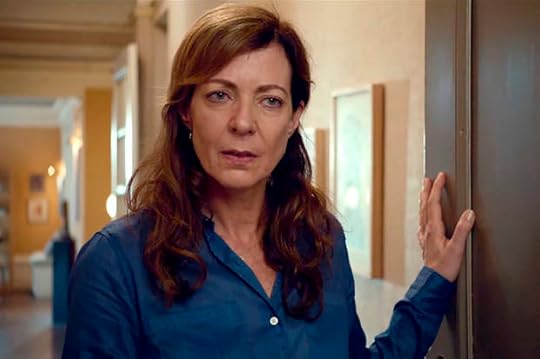
Allison Janney in "Tallulah" (Credit: Netflix)
As Margo, in “Tallulah,” Allison Janney is adrift in her life, hiding out in an apartment she is not supposed to have. Margo is a marriage expert whose husband (John Benjamin Hickey) has left her for another man (Zachary Quinto).
She also has not seen her son Nico (Evan Jonigkeit) in several years. Then Nico’s girlfriend Tallulah (Ellen Page) shows up, broke and with a baby — allegedly Margo’s grandchild — needing a place to stay.
Unbeknownst to Margo, Tallulah has made a wrong-headed decision to do what she thought was the right thing, and has kidnapped an infant from Carolyn (Tammy Blanchard). As Margo helps Tallulah with her situation, Tallulah helps Margo find her value in life.
Writer/director Sian Heder’s (“Orange Is the New Black”) feature debut reunites Janney and Page almost a decade after they played mother and daughter in “Juno.” The film is a fascinating character study of these very different, very troubled women, and Janney’s performance in particular is outstanding. Margo allows the great character actress to play both steely and vulnerable — often in a single scene, as when she tries to seduce her apartment building’s doorman (Felix Solis).
Janney chatted with Salon about playing women who are awkwardly comic, intimidating or have control issues.
Margo is a character who is frustrated with her life. How did you connect to and express her tension and anxiety?
I was very struck by the film’s metaphor of gravity disappearing and whether or not you decide to hold on or let go. I was struck by Margo’s character wanting to let go in the beginning. She’s at an impasse. Her connectivity to the world is gone. Her family is shattered and she has no control over it. I’ve felt that — where I’ve wanted to let go — both as an actress and as a human. I have moments when I just can’t deal with it and I want to go and run away.
Through her experience with Tallulah and the baby, she’s found a new reason to stay. As an actress, I wanted to show that arc. I thought it was beautiful. I had an image of a friend going through a divorce and I was struck by her bed: where her husband use to sleep were her books. When I met with Sian, we put that in the movie. I think the humanity of Margo really resonated with me. I wanted to portray her.
Margo’s relationship with Tallulah is complex; she is caring for this stranger one minute then ready to kick her out the next. Can you talk about how you balanced the chaos and control?
I love how people come into your life for a reason. This is the worst thing in Margo’s life, Tallulah. Margo tells her, “You’re ruining my life!” She doesn’t want this. But she comes to realize how incredible this meeting was. It opens her up. It makes her express and feel things and the advice she gives to Tallulah helps her realize what she needs in her life. Their relationship is a healing thing that changes them. All three women in the film [Margo, Tallulah, Carolyn] have fractured families. All the women characters are well fleshed-out, and the story was fascinating. Sian’s subject matter is about mothers, and that perhaps not everyone should be a mother. Sian approached this not from a place of judging. I thought the characters were beautiful. I knew I wanted in.
You’ve worked with Ellen Page before in “Juno.” You have a wonderful rapport in a park scene …
I greatly admire Ellen. It is very easy to work with her. We both are very open to being present in the scene, listening and answering in the simplest way. In that park scene, Tallulah is the only person Margo has spoken to like that, because Margo is so outside of her life. Tallulah is the person Margo feels safest talking to because it’s the first time Margo is asked what she wants. She wanted to be married and have a family. She wanted to be a mother, and to love and be loved. “How’d that work out?” Tallulah asks. “Not very well,” Margo admits. She’d never said it to anyone before.
What I liked about the dynamic between Margo and Tallulah is that Margo is less interested in asking Tallulah about her son and more interested in getting to know and learn from this stranger. It is as if combating her loneliness is more restorative than reuniting with her family. Why do you think that is?
Yeah, that’s interesting. It’s true. Margo has lost her son and husband and there she is having to deal with her loneliness. And Tallulah makes Margo face that: her choices, and what she’s holding on to. The painting scene is a wonderful breakthrough. It’s the beginning of her letting go and being at peace and happy. Tallulah makes Margo face that, and she starts to see a life outside of who she is. She finds a new way to be. I know when she meets the baby she’s not sure it’s her grandchild, but that possibility — the chance it could be — makes her take this girl in.
There is a comic/dramatic scene in which Margo seduces her building’s doorman. You excel at making these awkward moments funny and sad. Can you describe your ability to find humor in pathos? And will you ever get a proper love scene?
Oh, you’re so funny! I prefer the love scenes that are funny and real. Most of the time things don’t work out the way they do in movies. That’s why I love this one: it’s not a typical love scene. I was happy that they kept it in. It propels my character’s story forward but it’s tangential. It’s great to see Margo taking these baby steps. I love playing things that go wrong, and having … sorry, I’m sort of speechless … the way he kisses her and immediately her old self comes back. All she wants is to be loved by someone, and she fucked it up. This feeling that she might actually be someone who can be loved by someone else is so important to her. The seed that she’s desirable is planted.
Margo talks about not always being a goody two shoes, and doing crazy things, like smuggling heroin in her crotch. What’s something people would be surprised to learn about you?
Well, Gary, there are many things that are not fit to print. I would probably raise a few eyebrows about some of the choices I’ve made in my life to fit in. Everyone has those moments in life when they make a decision … I’ve never tried to smuggle heroin, but I’ve done questionable things to hold on to someone’s love. I’ve done things I’m not proud of, but I’m still trying to be my best self and I love to play characters who are trying to look at themselves and move forward.
It’s hard to accept change and let it in to our lives. I don’t know why. All life is is a series of changes but we are reluctant to change! People stay in relationships for [the wrong] reasons. Why do we stay in them? Because of what we want them to be and not because of what they are. In my own life, I’m trying to face what life is and how to be able to change and embrace it. Holding on to what I think I need. Margo spoke to me for that reason. She made me want to open myself up and to change and have hope. I think the characters in “Tallulah” are ones you have mercy for and compassion.
Margo appreciates Tallulah for “being who she really is,” though audiences know she’s not. What can you say about playing no-nonsense characters? That’s a quality many of the characters you play have.
I like the duality of the complexity of people. We are not just one thing. As an actress, the more difficult the character, the more my job is to find the humanity. What is their dirty little secret? What makes them human no matter how despicable they are? It usually comes from a wound. Some, like Betty in “The Way Way Back,” drink to anesthetize their problems. Margo drinks, but her problem is she hides in this apartment that she isn’t supposed to have. She’s desperately trying not to let anyone know her reality. She doesn’t know who she is anymore.
Being six feet tall and walking in a room, people think I’m tough and confident. I can make you think that, but underneath, I’m insecure. You want to show you’ve got it all together in public, then you go home and sob. But that’s what I love to play. I understand wanting to hide things from people and being fragile but tough on the outside. We all come from the same place and put it out there.
Mike Pence slams Obama for describing Trump as a “demagogue”: “I don’t think name calling has any place in public life”
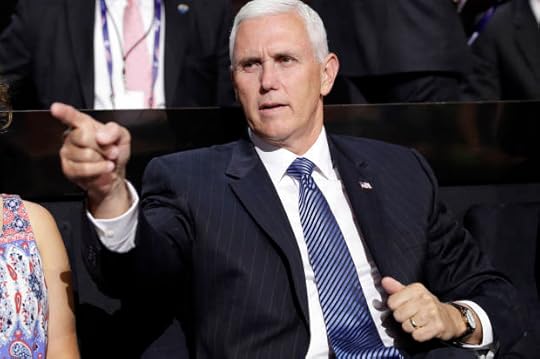
Vice Presidential nominee Gov. Mike Pence of Indiana points as he sits during the second day session of the Republican National Convention in Cleveland, Tuesday, July 19, 2016. (AP Photo/John Locher) (Credit: AP)
Donald Trump has spent considerable amount of time fighting back embarrassing reports that he attempted to nix his own selected running mate in the final hours before his campaign officially announced its pick of conservative Indiana Governor Mike Pence. Since his selection of the conservative who backed Trump rival Ted Cruz in the primary, there have been countless reports on the significant policy difference between the pair. Still, Trump has attempted to tamp down any talk of potentially problematic ideological rift.
Well, we can now add name calling to the growing list of areas the two running mates disagree on that includes: trade, a Muslim ban, racist attacks on judges or the need to punish women who seek abortions.
“I don’t think name calling has any place in public life,” Trump’s running mate told conservative talk radio host Hugh Hewitt on Friday. Asked about Democrats attack on Trump during this week’s Democratic National Convention, Pence complained that President Obama was wrong to call the GOP presidential nominee a “demagogue.”
“I thought that was unfortunate that the president of the United States would use a term like that, let alone laced into a sentence like that.”
While Pence decried the state of politics on the Democratic side, Trump was in the midst of his latest Twitter rant, lashing out former New York City mayor Mike Bloomberg and retired four-star Marine general and former commander of American forces in Afghanistan, John Allen:
"Little" Michael Bloomberg, who never had the guts to run for president, knows nothing about me. His last term as Mayor was a disaster!
— Donald J. Trump (@realDonaldTrump) July 29, 2016
General John Allen, who I never met but spoke against me last night, failed badly in his fight against ISIS. His record = BAD #NeverHillary
— Donald J. Trump (@realDonaldTrump) July 29, 2016
Crooked Hillary said that I "couldn't handle the rough and tumble of a political campaign." Really,I just beat 16 people and am beating her!
— Donald J. Trump (@realDonaldTrump) July 29, 2016
In what is quickly becoming the age of Prime, why do investors still hate Amazon?
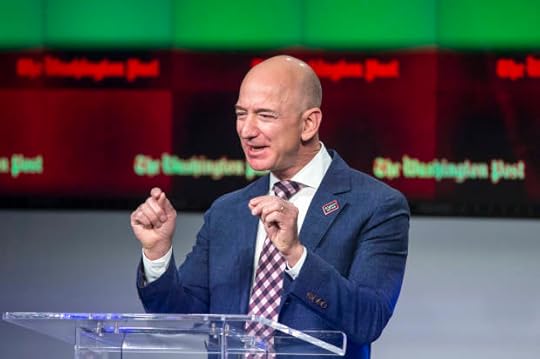
FILE - In this Jan. 28, 2016, file photo, billionaire Amazon founder and Washington Post owner Jeff Bezos talks about the history and character of the Post during a dedication ceremony for its new headquarters in Washington. Presumptive Republican presidential nominee Donald Trump told Fox News in an interview on May 12, 2016, that Bezos was using the Post to help Amazon avoid taxes. (AP Photo/J. Scott Applewhite, File) (Credit: AP)
For the first 20 years of its existence, Amazon was a difficult company to appraise. It increased its dominance of online retailing without actually making a profit, banking on future market shares being worth more than cash at hand — and its strategy worked.
That dominance has not translated into its stock prices, however, as even now investors seem unsure how to evaluate Amazon’s business model — or refuse to trust its CEO. Despite reporting on Thursday that its second quarter revenue was up 31 percent to $30.4 billion, and its net income was up 835 percent to $857 million, Amazon’s stock only rose 2.2 percent, far below what experts would expect with such gains.
Forbes’ Peter Cohan argued that the reason for this low valuation could simply be that investors want the company to focus on its most profitable commodities — Amazon Web Services and, perhaps, Prime — instead of following CEO Jeff Bezos and continuing to invest heavily its own infrastructure.
“It invests capital in warehouses, inventory, delivery networks, and computer systems that give it the ability to keep prices low and spread those fixed costs over a huge number of orders,” Cohan wrote. “Amazon also keeps inventing new products and services that it can sell customers to increase even more the number of orders over which it can spread those fixed costs.”
This philosophy is reflected in the company’s earning statement, which focused on Amazon’s investment in Alexa and its third-party apps; the introduction of an all-new Kindle; the success of the Amazon Dash Button; and the critical acclaim for Amazon Studios’ original programming.
Of more interest to investors, Cohan suggested, would be the launch of Amazon Prime in India or a more comprehensive account of how the company plans on capitalizing on Prime’s increasing market share.
As Michael Levin, co-founder of Consumer Intelligence Research Partners, told Quartz’s Alison Griswold, “Amazon talks about [Prime] as a principal driver of success, with just about every financial release talking about new benefits, new programs, or how much better Prime has done — yet, Amazon doesn’t elaborate in a way that investors can use, and specifically that investors can incorporate into forecasting models.”
Federal court strikes down North Carolina voter ID law: “Passed with racially discriminatory intent”
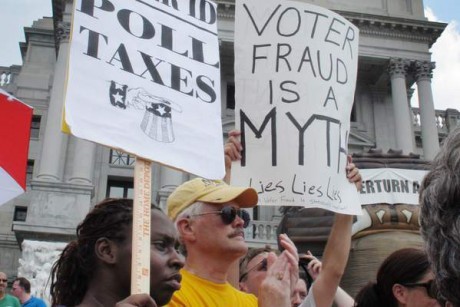
Demonstrators hold signs on the steps of the Pennsylvania Capitol to protest the state's new voter identification law. (Credit: AP/Marc Levy)
A federal appeals court struck down North Carolina’s 2013 rewriting of voting laws to require photo identification to cast in-person ballots, calling the provision “racially discriminatory.”
The Fourth Circuit Court of Appeals on Friday struck down significant portions of the Republican-backed bill, reversing a lower-court’s ruling that had upheld the controversial law.
In the 83-page ruling the three-judge panel agreed with the Justice Department, who sued over the law, finding that the restrictions violated the remaining provisions of the federal Voting Rights Act and the Constitution.
“We can only conclude that the North Carolina General Assembly enacted the challenged provisions of the law with discriminatory intent,” Circuit Court Judge Diana Gribbon Motz wrote, arguing that the lower court failed to adequately consider North Carolina’s history with race and voting.
“The record makes clear that the historical origin of the challenged provisions in this statute is not the innocuous back-and-forth of routine partisan struggle that the State suggests and that the district court accepted,” she explained.
After the Supreme Court struck down a provision of the Voting Rights Act that requires certain states with a history of discrimination receive pre-approval from the federal government before changing voting rules, Republicans in North Carolina rushed to pass restrictions on access to the ballot. Legislators in the state eliminated same-day voter registration, rolled back of a week of early voting and put an end to out-of-precinct voting.
On Friday, the appeals court also ordered North Carolina to keep same-day voter registration and out-of-precinct voting in effect as the case made its way through the courts.
“In holding that the legislature did not enact the challenged provisions with discriminatory intent, the court seems to have missed the forest in carefully surveying the many trees,” the opinion said of a lower court’s April ruling that rejected the that the legislature had intentionally discriminated against minority voters and that large numbers would be disenfranchised by the changes to the voting system.
Most damming, the appeals court — citing a lower court’s findings — noted that North Carolina legislators not only sought data breaking down voting practices by race, but then created the law’s new restrictions to single out practices disproportionately popular among African Americans, like early voting and provisional ballots.
A state suit against the law is set to go to trial in September, when challengers to the law say they plan to present evidence that 1,400 eligible voters were improperly denied their vote in the 2016 primary due to the discriminatory voter identification requirement.
The ruling comes just days after a federal appeals court in Louisiana found that Texas’ strict voter ID law also violated the Voting Rights Act and ordered the state to make changes before the November election.
Michigan AG announces charges against 6 more state workers in Flint water crisis investigation

FILE - This Jan. 26, 2016 file photo shows a sign over the Flint River noting Flint, Mich., as Vehicle City. After months of national attention on lead-tainted drinking water in Flint, many are starting to ask questions about a 74-mile pipeline being built from Lake Huron to the struggling former auto manufacturing powerhouse. The $285 million project is rooted in political ambitions and long-simmering resentment toward Detroit, which for decades had near-total control of the city's water rates. (AP Photo/Carlos Osorio, File) (Credit: AP Photo/Carlos Osorio, File)
State Attorney General Bill Schuette on Friday announced additional charges related to the lead contamination of Flint, Michigan’s drinking water.
In 2014, Flint switched its water source to the Flint River, the infrastructure for which had corroded after decades of neglect, causing high lead levels in the water supply. As many as 12,000 children in the city are thought to have been exposed to the contaminated water.
Schuette’s office announced charges against six state workers between the Michigan Departments of Environmental Quality and Health and Human Services. Three other state and city officials were charged in April.
Three employees at Health and Human Services — Nancy Peeler, Corinne Miller, and Robert Scott — were charged with misconduct in office, conspiracy and willful neglect of duty. At Environmental Quality, three more state employees — Liane Shekter-Smith, Adam Rosenthal, and Patrick Cook — were charged similarly for their roles in the coverup.
“Each of these individuals attempted to bury or cover up, to downplay or hide information that contradicted their own narrative,” Schuette said in a press conference Friday morning. “In essence, these individuals concealed the truth, and they were criminally wrong to do so.”
“These are real people — families who have been lied to by government officials and treated as expendable, as if they don’t count,” he added. “When our investigation is completed and our prosecutions are successful, then accountability and justice will be delivered to the families of Flint.”
JoJo returns: “I ate 500 calories a day. It was the most unhealthy thing I’ve ever done.”
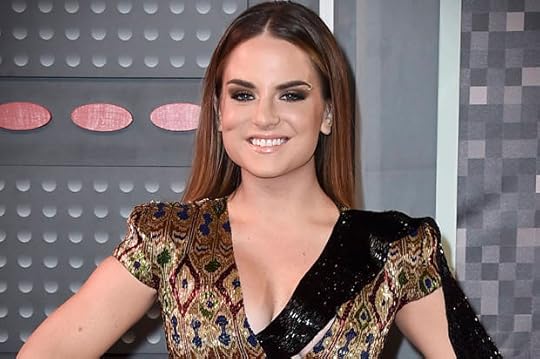
Joanna 'JoJo' Levesque (Credit: AP/Jordan Strauss)
Ten years off the grid is an almost unimaginably long time in any profession, but easily none more than that of a pop star. It’s a gamble even for the biggest and most confident multi-hyphenates — like Justin Timberlake, who let seven years lapse between his last two releases. And it can be a severe career crippler for big names embroiled in contract disputes, as George Michael and Kesha have learned. So imagine the what it must be like to the singer JoJo right now. To be mounting a comeback, at the age of 25. And to be speaking out, with the fearlessness of a show business veteran, of the dark underside of teen fame.
You may — especially if you were of a certain age in the early 2000s or had kids who were — remember Joanna, better known as JoJo, Levesque. After gaining national attention on “America’s Most Talented Kids,” she released her debut album and a briefly ubiquitous hit single, “Leave (Get Out).” She was thirteen. A second album and another hit single followed, and acting gigs in the films “Aquamarine” and “RV.” She was for a time part of an overlapping wave of teen stars that included “Hannah Montana” era Miley Cyrus, Selena Gomez, Emma Roberts and the Jonas Brothers.
And then… not a whole else. She released the free mixtape “Can’t Take That Away From Me” in 2010. She did some other acting gigs, released a few singles, did some touring. She became an adult. And she sued her former label, claiming the contract she signed when she was a child had done “irreparable damage to her professional career.”
Now, a decade after her last studio album, she’s returning with a new album in October. Meanwhile, her new single, “F__k Apologies,” featuring Wiz Khalifa, dropped on Thursday, and she’s started at the opening act on tour for Fifth Harmony. As for the new song, Billboard reports that after all this time, she’s still got her “signature expressive, slightly raspy delivery” as she pointedly sings, ” I would say I’m sorry if I really meant it.”
Her unapologetic stance appears to have been hard won. In a Thursday interview with Popsugar, she admitted to “something that I agreed to do that ended up really messing with me psychologically” — that when she was 18, “I was under a lot of pressure with a company I was previously working with and they wanted me to lose weight fast. So they got me with a nutritionist and had me on all these supplements, and I was injecting myself — this is a common thing that girls do, by the way — it makes your body only need certain calories, so I ate 500 calories a day. This was the most unhealthy thing I’ve ever done. And then I gained all the weight back. I felt terrible about myself. I felt like, ‘If I don’t do this, my album won’t come out.’ And it didn’t! So it’s not like it even worked!”
JoJo’s account of the insane pressures on young girls in show business, dismaying as it is, is not surprising. It’s a horrifying show business tradition, dating back at least as far as Judy Garland, who was reportedly put on her first diet as an aspiring MGM star at the age of 14. But what’s inspiring is how many are now speaking out about how insane this is. Kesha, who was signed to her contract at 19, has claimed her former producer Dr. Luke called her a “fat f__king refrigerator” and that earlier in her career she developed an eating disorder. Demi Lovato, who was a child actress and teen Disney star, has said she was bullied and called “fat” by other kids as a tween. She has since been open about her eating disorder and mental health struggles, speaking earlier this week at the Democratic National Convention. And “View” cohost Raven Symoné said last year on “The View” that as a child actor, “I remember not being able to have the bagel or anything at [craft services] – we call it crafty – where it’s just a table of food ready for you to eat whenever you want. I remember people were like, ‘You can’t eat that. You’re getting fat.’ I’m like, ‘I’m seven! I’m hungry!”‘
JoJo, meanwhile, now says she feels healthy and strong. But she admits, “It’s hard to to uncloud all those things and listen to yourself. That’s what I’ve learned to do in the past few years. I had to unpack some of that damage that being on that weird diet did to me.”
Florida confirms first “locally transmitted” cases of Zika in United States

This 2006 photo provided by the Centers for Disease Control and Prevention shows a female Aedes aegypti mosquito in the process of acquiring a blood meal from a human host. On Friday, Feb. 26, 2015, the U.S. government said Zika infections have been confirmed in nine pregnant women in the United States. All got the virus overseas. Three babies have been born, one with a brain defect. (James Gathany/Centers for Disease Control and Prevention via AP)
Florida Governor Rick Scott announced on Friday that his state is the first in the union to confirm what the Florida Department of Health characterizes as “local transmission” of the Zika virus.
Unlike the previous 1,650 cases in the United States, in which the patient was infected overseas and returned home as a carrier, the four patients identified by the Florida Health Department are believed to have contracted the virus from mosquitoes originating in a small area north of Miami.
The virus was discovered in the 1940s, but only recently have scientists realized the threat it poses to fetuses, as it is believed to be responsible for a Brazilian microcephaly outbreak. It is also known to cause blindness and impaired vision, deafness, and impaired growth in fetuses whose mothers are carriers.
Although the World Health Organization estimates that the risk of such birth defects is low — only one in 100 infected women will give birth to a baby with such defects — it still recommends women who hope to become pregnant avoid traveling to regions in which the virus is known to be spreading, or to practice safe-sex for at least eight weeks after traveling in them.
Governor Scott assured Floridians at a press conference that although no actual mosquitoes have tested positive for the virus, the state is “being very aggressive at testing people [in the Broward and Miami-Dade areas],” going door-to-door collecting urine samples from residents.
“We are testing the mosquitoes there and we spraying to make sure it’s contained,” Governor Scott said, before noting that the health department does not believe the transmission is “ongoing.” Still, he said, “if you live in this area and want to be tested, I urge you to contact the county health department.”
The governor concluded the press conference by stating that “this is not just a Florida issue, this is a U.S. issue, it is a national issue — we’re just the front of it.”



